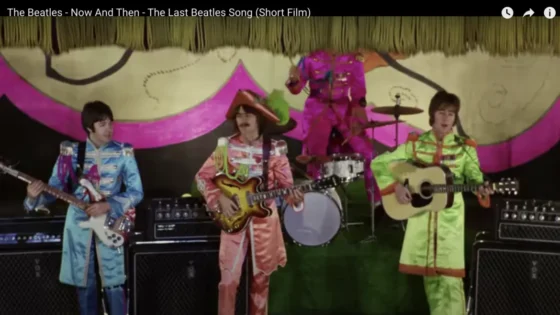Tech Firms Race to Address Growing Challenge of Authenticating AI-Generated Images Amid Misinformation Concerns
As tech giants strive to refine their AI offerings, the demarcation between AI-created images and genuine ones is becoming increasingly blurred. Ahead of the 2024 presidential campaign, apprehensions are mounting over the potential exploitation of these images for propagating false narratives.
Google unveiled a potential solution named SynthID. This tool embeds an invisible digital ‘watermark’ directly into images, imperceptible to the human eye but detectable by computers trained to recognize it. Google asserts that this robust watermarking technology represents a pivotal stride in curbing the proliferation of manufactured images and decelerating the dissemination of misinformation.
How AI-generated images are creating an impact on society?
AI-fabricated images, particularly ‘deepfakes,’ have been accessible for years and have been increasingly harnessed to create deceptive visuals. Notable instances include fabricated AI images depicting former President Donald Trump evading law enforcement, which went viral in March. Similarly, a counterfeit image depicting a Pentagon explosion briefly rattled stock markets in May. While some firms have integrated visible logos and textual ‘metadata’ denoting image origins, these methods can be conveniently cropped or manipulated.
Representative Yvette D. Clarke (D-N.Y.), an advocate for legislation mandating watermarking of AI images, commented, “Clearly the genie’s already out of the bottle. We just haven’t seen its full potential for weaponization.”
Presently, Google’s tool is exclusively accessible to select cloud computing customers and is compatible only with images generated through Google’s Imagen image-generator tool. Its usage remains voluntary due to its experimental nature.
Check Google’s original article here
The ultimate aspiration is to establish a system wherein embedded watermarks facilitate the identification of most AI-generated images. Pushmeet Kohli, Vice President of Research at Google DeepMind, the company’s AI research arm, cautioned that the tool is not infallible. He mused, “The question is, do we have the technological capabilities to achieve this?”
As AI’s prowess in crafting images and videos advances, concerns are escalating among politicians, researchers, and journalists regarding the fading line between reality and deception in the digital realm. This erosion could deepen prevailing political divides and hinder the dissemination of accurate information. This development coincides with the refinement of deepfake technology while social media platforms are scaling back their efforts to counter disinformation.
Watermarking has emerged as a favored strategy among tech firms to mitigate the adverse consequences of rapidly proliferating ‘generative’ AI technology. In July, a White House-hosted meeting convened leaders from seven major AI companies, including Google and OpenAI, who pledged to develop tools for watermarking and identifying AI-generated content.
Microsoft has spearheaded a coalition of tech and media entities to formulate a shared watermarking standard for AI images. The company is also researching novel methodologies to track AI images, alongside incorporating visible watermarks on images produced by its AI tools. OpenAI, renowned for its Dall-E image generator, similarly employs visible watermarks. Some AI researchers have proposed embedding digital watermarks detectable solely by computers.
Kohli underscored the superiority of Google’s new tool, as it remains effective even after significant image alterations—a substantial improvement over prior methods that could be easily circumvented through image modifications.
The urgency to identify and counter fabricated AI images intensifies as the United States approaches the 2024 presidential election. Campaign advertisements are already featuring AI-generated content. For instance, in June, the campaign of Florida Governor Ron DeSantis released a video incorporating forged images of Donald Trump embracing former White House advisor Anthony S. Fauci.
While propaganda, falsehoods, and exaggerations have always been part of U.S. elections, the fusion of AI-generated images with targeted ads and social media platforms could amplify the spread of misinformation and mislead voters. Clarke cautioned against potential scenarios where fabricated images could instigate panic or fear among the public or even be exploited by foreign governments to meddle in U.S. elections.
Though careful scrutiny of Dall-E or Imagen images usually uncovers anomalies like extra fingers or blurred backgrounds, fake image generators are poised for advancement. This evolution mirrors the ongoing cybersecurity arms race. Those aiming to deceive with counterfeit images will continue to challenge deepfake detection tools. This explains Google’s decision to withhold the inner workings of its watermarking tech, as transparency could invite attacks.
Ultimately, as AI-generated content progresses and efforts to regulate it intensify, the quest to distinguish fact from falsity in the digital landscape remains an ongoing struggle.



